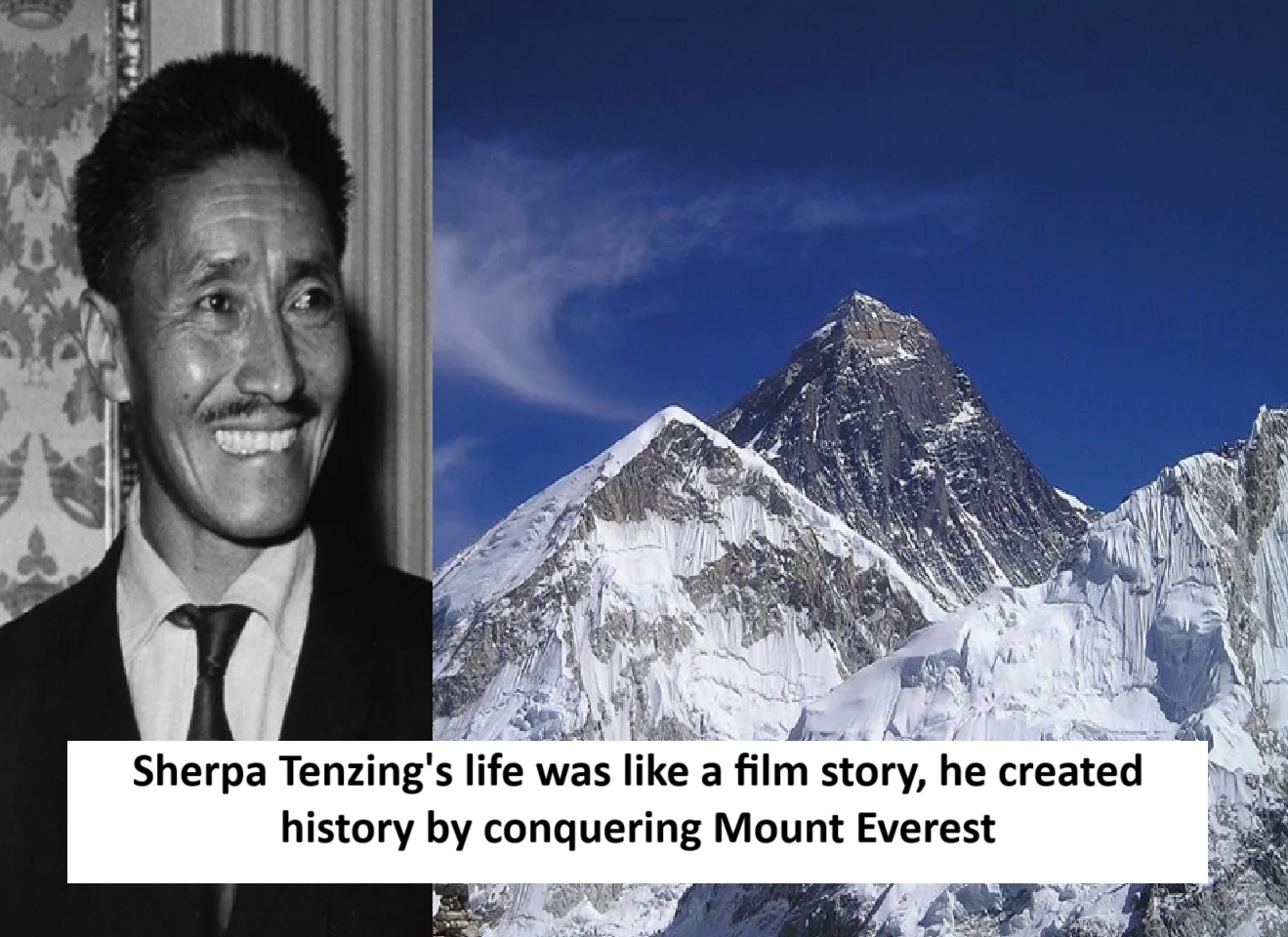
News Topical, Digital Desk : Sherpa Tenzing Norgay, a name that conjures up images of the snowy peaks of the Himalayas, countless stories of courage and a life that is no less than a cinematic saga. He was an ordinary Sherpa who, along with New Zealand mountaineer Edmund Hillary, created history on 29 May 1953 by climbing the world's highest peak, Mount Everest. It was not just a climb, but a milestone of human passion, courage and hard work that made Tenzing one of Time magazine's 100 most influential people of the 20th century. Every page of his life is filled with struggle, courage and the flight of dreams.
How did you enter the world of mountaineering?
Tenzing's foray into mountaineering began in 1935, when at the age of 20 he was offered a chance to join the British Mount Everest recording expedition led by Eric Shipton. His cheerful smile and a recommendation from his friend Ang Tharkay got him the chance. Subsequently, in the 1930s he joined three British Everest expeditions from the Tibetan side as a high-altitude porter.
In the 1940s, Tenzing worked as a 'batman' for Major Chapman in Chitral (now Pakistan). His first wife Dawa Phuti died here. During the partition of India in 1947, he returned to Darjeeling with his two daughters, Pem Pem and Nima. During this time, he traveled by train without a ticket wearing Major Chapman's old uniform. Tenzing used to do such bold acts.
In 1947, Tenzing was part of an unsuccessful Everest expedition where a storm forced him to turn back from 22,000 feet. The same year, he rescued Wangdi Norbu, leader of a Swiss expedition, and climbed the Kedarnath peak (22,769 feet) in the Garhwal Himalaya. In 1951, he joined the British Everest recording expedition, which laid the foundation for his big stage.
...and steps were taken on Everest
In 1952, Tenzing took part in the Swiss expedition, the first serious attempt to climb Everest via the southern route of Nepal. In May 1952, Tenzing and Raymond Lambert set the highest climbing record at that time by reaching a height of 8,595 metres (28,199 ft). This expedition opened a new route to Everest and Tenzing was recognised as a full expedition member for the first time. His friendship with Lambert became so strong that it lasted a lifetime.
In 1953, a British expedition led by John Hunt gave Tenzing a new chance. The expedition was a huge effort, with 362 porters, 20 Sherpa guides and 10,000 pounds of supplies. During the expedition, Hillary fell into a crevasse, but Tenzing saved his life by catching the rope with his ice axe. This incident further strengthened Hillary's trust in Tenzing.
On May 26, Tom Bourdillon and Charles Evans tried to reach the peak but returned 300 feet below the mark due to a malfunction in the oxygen system. After this, Hunt entrusted Tenzing and Hillary with the final climb. On May 28, after spending two days on the South Col amid a snowstorm, they pitched tents at 27,900 feet. At 11:30 am on May 29, 1953, Tenzing and Hillary set foot on the summit of the 8,848-metre-high Everest.
Hillary took the historic photograph of Tenzing standing with his ice axe. Tenzing later revealed in his autobiography that Hillary reached the summit first, and he followed right after. It was a shared victory that made both of them famous around the world.
--Advertisement--

 Share
Share



